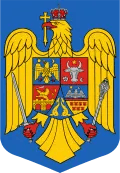
According to the 2011 census, Romania’s population is 20,121,641. Like other countries in the region, its population is expected to gradually decline in the coming years as a result of sub-replacement fertility rates and negative net migration rate. In October 2011, Romanians made up 88.9% of the population. The largest ethnic minorities are the Hungarians, 6.5% of the population, and Roma, 3.3% of the population. Hungarians constitute a majority in the counties of Harghita and Covasna. Other minorities include Ukrainians, Germans, Turks, Lipovans, and Tatars. In 1930, there were 745,421 Germans in Romania, but only about 36,000 remain today. As of 2009, there were also approximately 133,000 immigrants living in Romania, primarily from Moldova and China.
The total fertility rate (TFR) in 2013 was estimated at 1.31 children born per woman, which is below the replacement rate of 2.1, and one of the lowest in the world. In 2012, 31% of births were to unmarried women. The birth rate (9.49‰, 2012) is much lower than the mortality rate (11.84‰, 2012), resulting in a shrinking (−0.26% per year, 2012) and aging population (median age: 39.1, 2012), with approximately 14.9% of total population aged 65 years and over. The life expectancy in 2013 was estimated at 74.45 years (70.99 years male, 78.13 years female).
The number of Romanians and individuals with ancestors born in Romania living abroad is estimated at around 12 million. After the Romanian Revolution of 1989, a significant number of Romanians emigrated to other European countries, North America or Australia, because of better working conditions and academic possibilities offered abroad. Some 45,000 foreigners are present on the local labor market, of which about 30,000 are blue-collar workers.
Historical population
Year: 1866
Population: 4,424,961
Year: 1887
Population: 5,500,000 Change: +24.3%
Year: 1899
Population: 5,956,690 Change: +8.3%
Year: 1912
Population: 7,234,919 Change: +21.5%
Year: 1930
Population: 18,057,028 Change: +149.6%
Year: 1939
Population: 19,934,000 Change: +10.4%
Year: 1941
Population: 13,535,757 Change: -32.1%
Year: 1948
Population: 15,872,624 Change: +17.3%
Year: 1956
Population: 17,489,450 Change: +10.2%
Year: 1966
Population: 19,103,163 Change: +9.2%
Year: 1977
Population: 21,559,910 Change: +12.9%
Year: 1992
Population: 22,760,449 Change: +5.6%
Year: 2002
Population: 21,680,974 Change: -4.7%
Year: 2011
Population: 20,121,641 Change: -7.2%
Note: Figures prior to 1948 do not reflect current borders.






